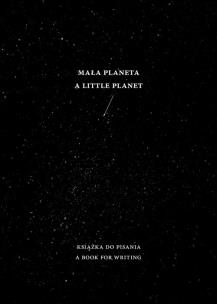- Regulamin
- Koszty dostawy
- Kontakt
- Dziś w ofercie 241 705 produktów
KSIĄŻKI
- Albumy
- Beletrystyka
- Biografie
- Dla dzieci i młodzieży
- Edukacja
- Ekonomia i biznes
- Ezoteryka
- Historia
- Informatyka
- Kalendarze
- Komiksy
- Kryminał i sensacja
- Kultura i sztuka
- Literatura faktu
- Literatura kobieca
- Literatura piękna
- Medycyna
- Nauka języków obcych
- Nauki humanistyczne
- Nauki przyrodnicze
- Nauki ścisłe
- Podręczniki
- Poradniki
- Prawo i administracja
- Przewodniki i podróże
- Psychologia
- Religia
- Sport
- Technika
- Zdrowie i uroda
ZABAWKI
- Artykuły dla niemowląt
- Bączki
- Bujaki i skoczki
- Ciągnij / pchaj
- Dla niemowlaka
- Grzechotki i gryzaki
- Karuzele i pozytywki
- Maty i centra zabaw
- Projektory i lampki
- Sortery i piramidki
- Zabawki
- Edukacyjne i kreatywne
- Figurki
- Klocki
- Lalki
- Pojazdy
- Pluszaki i maskotki
- Sport i rekreacja
- Zabawa w dom
- Zabawki drewniane
- Puzzle
- Do 200 elementów
- 201-500 elementów
- 501-1000 elementów
- Ponad 1000 elementów
- Puzzle 3D
ART. PAP
- Artykuły biurowe
- Artykuły piśmiennicze
- Bloczki i kartki samoprzylepne
- Dziurkacze
- Kalkulatory
- Nożyczki i nożyki
- Skoroszyty
- Teczki
- Wizytowniki
- Zszywacze
- Artykuły szkolne
- Akcesoria szkolne
- Modelowanie
- Notatniki i zeszyty
- Piórniki
- Plecaki i torby
- Pojemniki na śniadanie
- Pomoce naukowe
- Przybory matematyczne
- Przybory rysunkowe
- Upominki i gadżety
- Akcesoria do książek
- Artykuły balowe
- Breloki i zawieszki
- Drobiazgi, różności
- Kubki
- Oferta Świąteczna
- Papeteria, kartki i naklejki
- Skarpetki Many Mornings
- Upominki
GRY
MULTIMEDIA
- Audiobooki
- Beletrystyka
- Biografie i wspomnienia
- Dla dzieci i młodzieży
- Fantastyka
- Filozofia i religia
- Historia
- Literatura faktu i reportaż
- Poradniki
- Sensacja i kryminał
- Filmy DVD/BD
- Animowane
- Biograficzne
- Fantasy
- Horrory
- Komedie
- Romanse
- Science Fiction
- Sensacyjne / kino akcji
- Thrillery
- Muzyka CD
- Alternatywna
- Blues
- Dla dzieci
- Jazz
- Klasyczna
- Piosenka aktorska i poetycka
- Pop
- Rock
- Świąteczna i kolędy
- Akcesoria GSM
- Głośniki
- Kable i adaptery
- Klawiatury
- Myszy
- Słuchawki
PROMOCJE
ZDROWIE
LEGO

Mała Planeta A little planet
Autor: Rozmus Lidia
Wydawca:
Austeria
ISBN:
9788378665007
EAN:
9788378665007
oprawa:
oprawa: broszurowa
format:
205x149 mm
język:
polski
liczba stron:
160
rok wydania:
2021
(0) Sprawdź recenzje
Opis produktu
Zasady bezpieczeństwa
W układzie słonecznym - jedna z najmniejszych, na Drodze Mlecznej - prawie niezauważalna, a we wszechświecie - nieskończenie mała drobina... ale jest.
Haiku - gatunek krótkiej poezji (17 sylab lub mniej), który powstał w Japonii w XVI wieku i obecnie stał się bardzo popularną formą poetycką na świecie.Haibun - krótka proza połączona z jednym lub kilkoma haiku.
Haibunga - haibun połączony z obrazem. Termin stworzony przez Lidię Rozmus w jej książce Dwadzieścia widoków z Kreciej Góry.
Sumi-e (obraz namalowany czarnym tuszem) - jest stylem malowania pędzlem, pochodzącym z XIII wieku Japonii. Ściśle związany z buddyzmem zen i podobny w koncepcji do japońskiej kaligrafii. Sumi-e polega na prostocie myśli, działania i formy, w celu stworzenia unikalnego piękna.
***
In the solar system - one of the smallest, in the Milky Way - almost imperceptible, and in the universe - an infinitely small speck... but it is there.
Haiku - a genre of short poetry (17 syllables or less) that originated in Japan in the 16th century and has now become very popular all over the world.Haibun - short prose combined with one or more haiku.
Haibunga - haibun combined with the image. The term was coined by Lidia Rozmus in her book Twenty Views from the Mole Hill, Deep North Press, Santa Fe 1999.
Sumi-e (""black-ink pictures"") - is a style of brush painting that originated in the 13th century Japan. Closely associated with Zen Buddhism and similar in concept to Japanese calligraphy, sumi-e relies on simplicity of thought, action, and form to create works of unique beauty.
CENA:
26,29
zł
Cena detaliczna:
49,00 zł
46%
rabatu
Najniższa cena z ostatnich 30 dni: 26,29 zł
Produkt niedostępny
Uwaga!!!
Ten produkt jest zapowiedzią. Realizacja Twojego zamówienia ulegnie przez to wydłużeniu do czasu premiery tej pozycji. Czy chcesz dodać ten produkt do koszyka?


Wybierz wariant produktu
